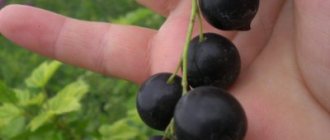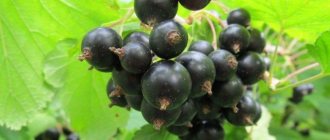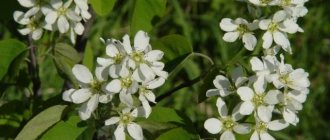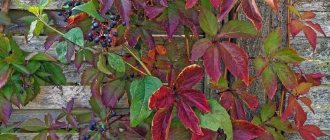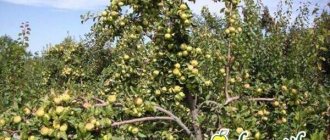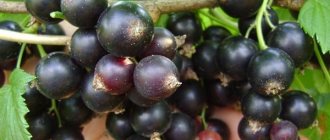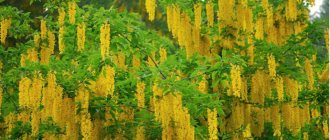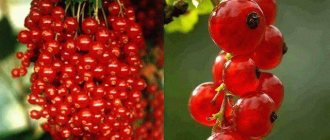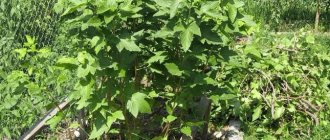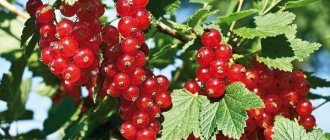Blackcurrant: description
The bush is a low perennial plant. It develops both in domestic and wild conditions. Found on sandy soils. Most varieties of the crop grow in Europe and North America.
The berries of the perennial shrub were considered Russian fruits for many years. Information indicates that the crop began to be grown on the territory of Ancient Rus' back in the 11th century. The bush was planted in many areas and areas were decorated with it. Today it is impossible to walk into a garden and not see a spreading berry crop in it.
The value of the bush is its black, tasty, aromatic fruits. A distinctive feature is that black currant is considered the ancestor of many other berry bushes. The plant does not require special care; the shrub produces an excellent harvest already in the 2nd year after planting in open soil.
The fruits of the bush are rich in vitamin C, so it is better to eat them fresh, but many gardeners freeze the harvest or make various preserves from it. The berries make incredibly tasty and healthy jam, fillings for sweets, compotes, and alcoholic drinks.
The leaves of the bush are suitable for pickles. Greens are suitable for making salads. Currant leaves reduce the amount of glucose in the blood; teas are made from them. The berries of the crop are eaten as a preventive measure against scurvy, as well as against low blood clotting and heavy bleeding.
Representatives of traditional medicine advise eating fresh or canned berries for gastritis and other stomach ailments. The dried greens of the bush are used as a strong antibiotic. Infusions from leaves have a positive effect on the treatment of rheumatism, urolithiasis and cystitis.
It is worth clarifying that the bush is an excellent cosmetic product. It is used to create soap, and the juice is rubbed into the nail plate.
You should not eat berries if you have thrombophlebitis.
Characteristics of the bush:
- The roots are branched and lie 0.2-0.4 m deep.
- The bush consists of a large number of branches of different ages located at different levels. It is thanks to this that the plant bears berries for more than 13 years.
- The largest harvest can be obtained in the 6th year after planting.
- The buds of the plant swell in spring already at a temperature of about +5 degrees Celsius.
- It begins to bloom at +12 degrees. Because of this, the bush often suffers from spring colds.
- Many varieties do not require pollination and are also cold-resistant. But to improve the taste of the berries, other types of crops should be planted nearby.
- The greens of the plant are aromatic and are often added to tea.
- The harvest is rich in vitamins.
Protecting currants from winter cold - recommendations from gardeners
Undoubtedly, currants are a frost-resistant crop and will easily overwinter at temperatures down to -30. However, if the thermometer is expected to drop lower next winter, the necessary measures should be taken to protect the shrubs from the approaching cold weather. Severe frosts can cause the death of seedlings and young branches of an adult plant that have not yet had time to adapt. In some cases, due to winter draft winds, the entire plant may die completely.
To prevent the negative consequences of a cold winter, the main thing that is recommended is to press the branches of bushes to the ground, which will warm them. If the entire plant is covered with snow, this will protect it from drafts and, therefore, from freezing. So, let's prepare several bricks and use them to press down the branches, divided into several parts and laid out in different directions, as shown in the figure.
Another method, more labor-intensive, involves covering the bush with agrofibre. The whole difficulty is that each branch needs to be wrapped individually and ensure that air access to them is not limited. Currants are even more likely to die from oxygen starvation than from impending frost.
Planting black currants
Planting and growing this shrub is not a difficult undertaking, but in order for the currants to grow productive, it is necessary to adhere to some recommendations.
When and how to plant black currants can be seen in the video below:
When to plant black currants?
It can be planted both in autumn and spring. But it is better to opt for the autumn season of the year. Seedlings should be planted at the end of September or early October. Before the winter cold, the plant manages to take root in the soil, the roots are fully adapted. Thanks to this, the currant bush will survive the winter frosts well and will begin to develop with renewed vigor in the spring.
You can also plant it in the spring - in April. But this option is less favorable for the plant. In the spring season of the year, it is better to plant currants in places where there is practically no snow in winter, otherwise the roots will begin to freeze. If the cuttings were purchased in the fall and cannot be planted, then they are dug in and planted in the spring (before the buds open).
The shoots must be trimmed before planting.
Planting black currants in spring
The shrub is considered one of the first plants to bloom very early. Spring planting should be done as early as possible.
The crop is easier to propagate by division or cuttings. The first option is simpler - shoots with roots are separated from the main plant. The soil is prepared in advance, the grass is removed, the soil is fed with humus (about 5 kg per hole). If there is no humus available, then you can add ammonium nitrate.
The root is deepened by 80 mm. The distance between berry plants is about 1-1.5 m. The planted seedlings are watered. As for propagating the crop in the spring by cuttings, in this case the branches are bent and sprinkled with soil. In autumn, they are separated and planted.
Planting black currants in autumn
The main requirement for autumn planting is that the plant should be planted 14 days before the first winter cold.
Algorithm for planting crops in autumn:
- Pit size: 0.4x0.4 m. Depth: 0.3 m. Dig a hole and fill it less than half with nutritious soil.
- For one planting hole, take humus, compost (peat) 1-2 buckets, 150 g of superphosphate, 40 g of potassium sulfate.
- Before planting, inspect the root system, remove all broken and dried shoots. There should be two buds left on the shoot. Plant the seedlings at an angle so that the branches are arranged in the form of a fan. Water the hole at the rate of 1 bucket per bush.
- In order for the seedlings to take root, the soil around them should be mulched with humus or peat. Alternatively, you can use dry sand.
- If there was no precipitation in autumn, water the plants more abundantly.
- Give blackcurrants a separate area in the garden. There should be a distance of 3 m between the rows of bushes. If the variety is compact, then the distance can be halved.
- To a greater extent, the crop varieties are self-pollinating, but it is better to choose a couple of mutually pollinating species.
Soil preparation
This berry bush loves moist soil. An excellent option is a moist area. It can be flat or even. The area must be protected from drafts. But when choosing a location, you also need to adhere to measures - places with close groundwater are not suitable for growing black currants.
The soil must be nutritious. The culture grows and develops well on medium and heavy loamy soils. If there is a large amount of carbonates in the ground, look for another area to plant the bush.
To prepare the site, you should plan the area - remove all the depressions, depressions and hills. The area is plowed to a depth of 0.3 m. Weed rhizomes are dangerous for the crop, you should get rid of them, and then dig up the ground again.
If possible, any vegetables should be planted in the ground for a year before planting the shrub. During the final digging, 1 kg of manure, 5 kg of superphosphate and 3 kg of potash fertilizers are added (calculated per 100 sq. m). The depressions are prepared 14 days before planting the cuttings; during this period of time the soil will completely settle and be ready.
Care after landing
At first, make sure that the soil under the bushes does not dry out. You cannot drown the root in water. After each rain or watering, the soil is loosened. This provides oxygen to the root.
If currants begin to bear fruit after planting in the fall for the next season, this is normal. When excavation work is carried out in the spring, flower clusters may appear after a few months. They need to be cut off immediately.
Planting and care in the fall provide protection for currants from low temperatures. This is a resistant crop that can withstand -40 °C black, -42 °C white. But in the year of planting, before frost, the bush needs to be covered with dry soil, and in cold regions, covered with spruce branches, white non-woven fabric or a cardboard box with holes for air access.
For currants, you need to carefully choose a place, prepare the soil, and plant according to all the rules. Then it will quickly grow, begin to bear fruit, and care will not cause much trouble.
Blackcurrant care
Caring for black currants depends on the period of the year, age, and also on the specific variety of berry bush.
in spring
Spring care is divided into three stages:
- Early period (last days of March - mid-April). By this time, the snow should have already melted or partially left the bed, but the currant buds have not had time to swell.
Use nitrogen as a fertilizer, as it helps the bush quickly grow green mass. Sprinkle purchased mixtures for bushes onto the soil. They are poured onto damp soil and sprinkled with a little soil on top. To prevent pests from attacking, collect and destroy all round buds. Collect organic residues left over from the fall and place them in the humus mixture. Some gardeners pour boiling water over plants to awaken the bush. - Middle period (last days of April - first days of May). The buds are already swollen, but spring frosts are still possible. If you did not add nitrogen earlier, do it now. Use urea (2 tablespoons per 20 liters of water) or ammonium nitrate (4 tablespoons per 20 liters of water). After application, sprinkle the area around the root trunk with soil. Add humus to the plants, or you can use compost. This period is also suitable for planting new seedlings. Treat old plants with iron sulfate (3-5%). You can use other products, for example, “Fitoverm” or “Kleschevit”.
- Late period (all of May). The shrub needs starch, so use dried potato peelings as fertilizer. Bury them in holes made in areas above which the ends of the branches are located. You can replace potato starch with corn starch. Foliar feeding with purchased mixtures brings excellent results. We recommend reading our article on spring fertilizing of currants. Water blackcurrants regularly, especially during drought.
Read more about caring for currants in spring here.
Weeds grow quickly, so loosen the soil regularly, only carefully so that the roots are not damaged. Constantly inspect the culture. The moth pest is especially active; a weak solution of nicotine sulfate helps get rid of it.
In summer
Summer care is divided into three stages:
- Before the harvest . Sprinkle wood ash under the root. Water abundantly. During drought, increase the amount of water. At this time, caterpillars appear. Manual collection can be used, but it will not bring significant results. Spray the plants with special products, for example “Iskra”. Cut off all dry branches.
- Berry picking. Sprinkle wood ash under each plant and dig it up along with the soil. Trim the ends of shoots affected by powdery mildew. Plants are often attacked by moth. Pick ripe fruits, do not let them become overripe.
- After the harvest. You can use superphosphate for feeding. In early August, 2 tbsp is enough. l. for 20 liters of water, after 14 days a double dose is required. Treat plants with Fitoverm, as it protects the bush from bud mites.
in autumn
In the autumn period of the year, caring for black currants is as follows:
- Feed the plant with superphosphate or ready-made mixtures. How and with what to fertilize currants in the autumn, read here.
- As soon as the bush has completely shed its leaves, be sure to powder the soil with wood ash, add compost or new nutrient soil.
- Remove any large swollen buds.
- Cut off infected branches and collect fallen leaves.
- Plant new cuttings at the end of September, but do everything carefully so that the roots of the plant are not damaged.
- At the beginning of October, transplant the cuttings into open ground.
- Do water-recharging irrigation.
More about caring for currants in the autumn is written here.
Once the plant has lost all its foliage, tie the bushes together with string, place boards under some branches and make one large frame of wood. If this is not done, then in winter the plant will be crushed by snow, and in the spring it will not have most of its branches.
Preparing currants for winter
Proper care of blackcurrants includes preparation for winter. The soil under the bushes is weeded and fallen leaves are removed.
Scheme for tying a currant bush for the winter
After the first frost, the bush is pulled upward in a spiral with a rope, clamping it at the top with a clothespin. The ground is covered with mulch. After a large amount of precipitation falls, a snow cushion 10 cm high is made at the base of the bush, and then the bush is completely covered with snow.
Processing black currants
The culture loves care and maintenance, so do not deny the shrub this. Proper and regular care will help you get a rich harvest of tasty and healthy berries.
Watering
The crop loves moisture; if there is not enough water, the bush stops growing and the berries become smaller. Without the autumn moisture charge, currants will not be able to survive the winter. The root system is not too deep (from 0.1 to 0.6 m).
Watering is necessary, but it should not be done too often. You can water 4-6 times in 1 season. If the summer is too dry, then you need to water the plant once a week. The water requirement is 50 liters per plant.
Experienced summer residents recommend digging small ditches near the bush into which water should be poured.
Top dressing
Nitrogen fertilizers are applied in early spring; young bushes need 50 g of urea. When the bush reaches the 4th year of life, these feedings are reduced. In the autumn season of the year, approximately 5 kg of organic fertilizers, for example, bird droppings, compost or manure, are added to the plant. You should also add 20 g of potassium sulfate and 50 g of superphosphate.
The frequency of fertilizing directly depends on the composition of the soil; the poorer it is, the more fertilizers need to be applied. If the soil on the site is nutritious and you fertilized it in advance before planting the cuttings, then the plant does not need large quantities of useful additional microelements.
Pruning in spring and autumn
Pruning in the spring season of the year is carried out only if it was not carried out in the fall. All frozen shoots are cut off, weak branches are destroyed.
At the end of the summer season, the tops of branches powdered with a layer of powdery mildew are cut off and weak shoots are destroyed. They will not bring a harvest, they will only thicken the plant.
At the end of August, blackcurrant branches are pinched - this action helps the tree to ripen and reduce the risk of powdery mildew. It is better to destroy the branches lying on the ground; fungal spores or pest larvae may have already settled on them.
In autumn, pruning is not much different from spring - all old and thickening branches are removed, it is advisable to reduce the length of the tops of the shoots. Always burn leaves and branches, as they can carry a variety of diseases.
Read more about autumn pruning of currants in this article.
The following are subject to pruning:
- broken branches;
- diseased branches;
- black shoots;
- old branches;
- tops of zero shoots;
- branches without branches.
For pruning, use garden shears or a knife. This procedure will help the plant lose “unnecessary load” and increase the amount of harvest.
Preparing for winter
It is very important to properly prepare the bush for the coming winter. The first step is to loosen the soil, then treat the bush and feed it. Urea is great for this; you can take a small box of matches with granules and dilute them in 10 liters of water. A sprayer is used to apply the mixture. After some time, you can feed the soil and apply phosphorus-potassium fertilizers.
Loosening is a mandatory procedure that helps the crop better survive the cold. However, you need to be careful not to damage the root system of the plant. You can use old newspapers, straw or peat as a mulch layer. If a very severe winter is approaching, then you can cover the bush with special agrofibre or other covering material.
Watering black currants in autumn
Currants require infrequent, but abundant watering. When watering currants, consider the following rules:
- the water must be settled;
- when watering, try not to get water on the bush itself, but water only the soil around it;
- do not forget to water before the bush begins to flower, during the ripening period of the berries and after harvesting;
- in dry weather in the fall, water-recharging irrigation is carried out;
- After watering, the soil must be mulched and loosened. Some gardeners use polyethylene or other similar materials to cover the soil around the bush after watering and loosening as "mulching devices."
Propagation of black currant
The berry bush reproduces in various ways. All these methods have pros and cons. If you approach this event responsibly, then propagating the bush will be an easy task.
Cuttings
Propagation of the crop using lignified cuttings begins in the autumn season of the year:
- Prepare the area for planting: add humus or compost (5 g per 1 sq. m), superphosphate (35 g), potassium magnesium (18 g). Dig everything up.
- Strong and healthy shoots are suitable as cuttings; when planting in the fall, divide them into sections 0.2 m long. The top cut should be 20 mm above the bud, the bottom 10 mm below.
- Any part can be used as a branch for planting, except the bottom, where the buds are too small.
- Plant the cuttings so that 2 buds remain above the soil.
- After planting, compact the soil, cover the area with a layer of mulch and water. Mulch prevents the soil from drying out, protects the plant from pests and protects the soil from overheating.
The cuttings can be cut in autumn or early spring. Branches cut in the autumn are tied into bunches and placed on the ground, covered with 20 mm of foliage on top. In the spring, they are taken out, cut into pieces and planted in thawed ground.
If the gardener did not have time to cut off the shoot in time, then you can try to propagate black currants by cuttings with rosettes of foliage. Not always, but sometimes this method works and the plant takes root successfully. The branches are constantly watered; it is important to monitor the amount of moisture at the time of bud break. As soon as the length of the branches has reached 40 mm, the bushes are fertilized with slurry (10 liters per 1 sq. m). Repeat feeding once every 14 days.
An experienced gardener in his video shows how to propagate currants from cuttings:
By layering
Blackcurrant layering can be arcuate or horizontal.
- Reproduction by arc layering. Under a strong branch, form a depression of 0.1 m. Bend the branch and fix it, bring the end out. Give the shoots a vertical position and tie them to a driven support. Fill the hole with nutritious soil. During the summer, fertilize with slurry, water and destroy weeds.
- Reproduction by horizontal layering. On the plant you should choose 1 or 2 branches of one or three years of age.
Branches that bend are suitable. Dig a ditch 0.1 m deep under each branch. Shorten it by a quarter and secure it, sprinkle with 30 mm of loose soil. Feed the layering with slurry (10 liters per 1 sq. m). With quality care, the length of the shoot will reach 60 cm by autumn, and it will already have its own root system. In the second half of September, the branch is cut, divided by the number of shoots that have formed on it, and replanted. Strong seedlings are suitable for independent development.
Watch a video about currant propagation by layering:
Dividing the bush
This propagation technique is used in rare cases, for example, during the redevelopment of the territory, when the crop is transferred to a new area.
Reproduction by dividing the bush is carried out as follows:
- Dig up the plants and divide them into equal parts, each should have 2-3 branches with a root system.
- Shorten the branches by a quarter.
- When planting, deepen the branches; the soil layer above the roots should be about 60 mm.
When is the best time to plant black currants?
There is an opinion that currants are an unpretentious plant, they will take root in any conditions, and they can be planted at any time of the year. This is partly true, but taking root and bearing fruit are two different things. In order for the plant to produce a good harvest, simple but mandatory conditions must be observed.
The first of them: it is better to plant a bush in the fall. Drop-off times vary by region. Best option: end of September - mid-October. It is important that the seedlings have 3-3 weeks left before the onset of frost. During this time, the plant will restore its root system and be ready to overwinter. By spring, the soil at the roots will be compacted, which will give them the opportunity to receive full nutrition.
Spring planting will require more trouble, and the berry itself is slightly less tolerated. In spring, it is advisable to plant in places where the snow cover is shallow and there is a danger of freezing the roots. Currants are planted in April, as soon as the snow melts. The layer of thawed soil should be 20 cm. The moister the soil during spring planting, the better the seedling will take root. Currants wake up early, it is necessary to plant them before the buds open.
The best varieties of blackcurrant
The culture is rich in varieties. They are divided into large, sweet, early, late, etc. Each summer resident will be able to choose the appropriate variety for the climate and region in which he lives.
Large varieties
Large black currants are famous for their fruit diameter of about 1.5-1.7 cm. Some berries reach large sizes.
The largest variety is considered to be bred in Siberia under the name Yadrenaya. The berries reach 7-8 g, the first harvest can be obtained in early summer. The only negative is that the variety is not suitable for growing in the south; the berries become smaller and acquire a sour taste. The plant needs constant reproduction.
Other large varieties:
- Dobrynya.
- Comfort.
- Sanyuta.
- The beauty of Lvov.
- Chereshnevaya.
- Anniversary Digging.
Sweet varieties
This type of crop is considered sugar. The fruits contain a huge amount of sweetness, pectin microelements, minerals and vitamins.
The best sweet varieties:
- Bagheera. The amount of sugar is 10.8%. The berries are not small and are suitable for creating various preserves. The harvest retains its presentation during transportation.
- Green haze. The amount of sugar is 10.2%, sometimes reaching 12%. The fruit size is medium to large. The fruits are used to make jelly and jam.
- Nina. The amount of sugar is 11%. The harvest is large, the bushes are of medium size. The fruits are nutritious and healthy.
- An excellent pupil. The amount of sugar is 11.1%. Charcoal fruits with sourness. The variety cannot boast of strong immunity; it often gets sick and is attacked by insects.
- Triton. The amount of sugar is 10.6%. The variety is intended for cultivation in the northern regions.
Early varieties
The most popular early varieties are:
- Litvinovskaya. Universal purpose, the plant grows tall. The fruit weighs about 3-4 g, with quality care it can reach 5 g. You can get about 2 kg of harvest from one plant. Litvinovskaya grows well in the Moscow region. The main disadvantage is that it does not tolerate heat.
- Gift of Smolyaninova. You can harvest 3 kg of berries from one plant. The plants are small. It has strong immunity and does not require pollinators. The variety performs well in the middle zone. Disadvantages: low yield and cold resistance.
- Selechenskaya 2. The plant reaches 2 m in height. The fruits are about 4 g, with proper care they reach 5 g. From one bush you can harvest about 7 kg of harvest. It is better to grow the variety in Western Siberia, Altai and Yakutia. The downside is that aphids attack in the summer.
- Summer resident. The bush is small. The fruits are about 4 g, from one plant you can get 5 kg of harvest. It has proven itself well in the Moscow region. Cons: impossible to transport, sensitive to frost, crumbles.
Mid-season varieties
The best representative of this group is Dobrynya. The plant needs good agricultural technology. Medium-sized bushes with a compact crown require support during the fruiting season, otherwise they will begin to fall to the ground.
It performs well even in compacted plantings. The weight of one berry is about 6 g. You can harvest 2 kg of harvest from one plant. It has excellent cold resistance and high transportability.
It boasts strong immunity to powdery mildew and bud mites. It is better to grow in Western Siberia and the Central region. Disadvantages - long ripening period, poorly propagated by cuttings, needs fertile soil.
Late varieties
A representative of this group is the Lazy Tree variety. The fruit weighs 2 g; from one plant you can harvest about 1 kg. Self-pollination is low, so it needs pollinators.
The plant has excellent cold resistance, strong immunity to blight and anthracnose. Grows well in the Volga region, Moscow region and central Russia. Disadvantages - berries of different sizes on one plant, the yield is inconsistent, and is susceptible to powdery mildew.
Varietal diversity
Currants have not only many types, but also a wide variety of varieties, differing in growing conditions, yields and ripening periods.
Among the abundance of varieties, you can always choose those that are suitable for a given type of terrain, climatic conditions and personal preferences of the owner of the site. Let's consider the classification of currant varieties depending on their ripening time:
Early varieties
Red currant variety Jonker
- Venus . Black currant, berry weight about 5 g. Tall bushes with sweet and sour berries.
- Pearl . Black currant with large berries, weighing up to 6 g.
- Ural white . Currants with white-yellow berries. The weight of the berries is up to 5 g. The bush is spreading, branching.
- Jonker . Red currant with very large berries weighing up to 7 g. The taste is sweet and sour.
- Umka . White currants. The berries are sweet and large. The bush is tall, not spreading.
Mid-season varieties
Variety Sanyuta
- Osipovskaya sweet . Red Ribes. The berries are large, up to 5 g. The bush is tall, weakly branched. The berries are very sweet.
- Roland . Red Ribes. The taste is sweet and sour. The variety is resistant to disease and frost.
- Anniversary . Black currant. The bush is tall and compact. The taste of the berries is sweet and sour.
- Imperial . White currant. The berries are medium 5-6 mm in diameter. The growth of the bush is average. The bush itself is spreading.
- Sanyuta . Black currant, berries weighing up to 5 g. Tall, compact bush.
Late varieties
Lazy person
- Valentinovka . The berries are large (up to 10 mm in diameter). The bush is tall, not spreading. The berries are sweet and sour.
- Lazy person . Black currant Compact bush. The berries are sweet.
Diseases and pests of black currant
Like any berry crop, black currants can suffer from various diseases. The plant is also often attacked by insect pests.
| Diseases/pests | Symptoms | What to do? |
| Currant bud mite | The buds swell quickly and subsequently do not bloom. | Treat with a suspension of colloidal sulfur 150 g per 20 liters of water. |
| Great currant aphid | Leaves wrinkle and curl. | Treat with anabasine sulfate solution (0.2%). |
| Currant leaf gall midge | The formation of wrinkled, disfigured leaves. | Treat with chlorophos (40 g per 20 liters of water) with the addition of karbofos (60 g). |
| Common spider mite | The leaves turn brown and the plant dries out completely. | Treat with infusion of onion or sulfur. |
| Currant disease | Currant flowers become of unusual shape and color and do not bear fruit. | Use special chemicals. |
| Anthracnose | Brown spots form on the leaves, they fall off, and the currant does not bear fruit. | Treat the plant with Bordeaux mixture (1%). |
We recommend reading an article about what causes blackcurrant diseases and what pests spoil the bush.
Black currant is one of the best representatives of berry bushes. The plant is famous for its juicy, healthy and tasty berries; even a novice gardener can grow a bush on his own plot.
0
0
Copy link
Compatibility of currants with other plants
Onions are a wonderful neighbor for currants. If you plant onions next to currants in late autumn, an important task will be completed - spring protection of the buds from bud mites. The proximity to honeysuckle and apple trees is considered good for currants.
The situation is completely different with planting black currants next to red currants. If these 2 species are planted side by side, the yield of each will decrease sharply. This phenomenon does not apply to golden currants, which perfectly coexist with chokeberries.
Compatibility table of black currant with other plants
| Name | Good neighborhood | Bad neighborhood |
| Black currant | Apple tree, golden currant, honeysuckle, tomatoes, potatoes, onions, anise, parsley, tarragon, coriander, basil, garlic | Plum, sweet cherry, cherry, gooseberry, raspberry, red currant, buckthorn, bird cherry, sea buckthorn |
The same consequences are observed when adjacent to raspberries, which need a spacious area. Due to the rapidly growing root system of raspberries, which oppresses other plants, currant bushes begin to experience discomfort, lack of moisture and lose vitality, which negatively affects its productivity. For the same reason, cherries, plums and sweet cherries are another undesirable neighbors for currants.
Planting bushes next to buckthorn has an unfavorable effect, from which currants can become infected with goblet rust. The proximity to bird cherry, which attracts the attention of the glassberry - a pest of all fruit and berry crops, and to the gooseberry - due to the moth, has dangerous consequences for currants.
To prevent attacks by parasitic insects, it is recommended to plant spicy plants near the bush that will repel pests with their pungent odor - anise, parsley, tarragon, coriander, basil, garlic.
Black currants, for their part, benefit crops such as tomatoes and potatoes, repelling their pests with phytoncides.
Trimming
Currant pruning is carried out in spring and autumn. This procedure is necessary because it allows you to remove dry, damaged, weak and injured branches, giving the plant more strength to grow new shoots. The main part of the ovaries is present on last year's growths of 4 and 5 year old branches. For this reason, it is necessary to delete branches older than 6 years, as they are not needed. With regular and proper pruning, black currants will bear fruit for 20 years, and red currants for up to 15.
In the fall, after the leaves fall, do the main pruning. In the spring, before the buds open, shorten stems that were damaged in winter to healthy tissue. Also cut out injured or damaged branches.
In summer, pinch the ends of young shoots to activate their tillering. This procedure will also help to form a neat bush shape.
Autumn pruning rules
After planting the shrub in open ground, shorten all its stems to 10–15 cm from the surface of the ground. Next year, select 5 of the most powerful zero shoots to form skeletal branches, remove the rest. On bushes 3–4 years old, select 3–6 powerful zero shoots and eliminate the rest. Avoid thickening the bush, remove weak and damaged branches that are located in the middle of the bush.
Biological characteristics of currants
Currant is a perennial shrub whose height does not exceed 1.5-2 m. A feature of the plant is the absence of buds on the roots. Look at the image. The growth of basal shoots (1) begins from the root collar zone (6). It is in this way that a currant bush is formed, which is why it does not sprout. The next year, after the appearance of shoots of zero order, two-year-old branches appear (2), then three-year-old branches (3).
This feature of currants must be taken into account when planting a bush.
Root collar
should be approximately 10 cm below the soil surface.
In this case, many shoots of zero order appear, the bush is easier to form, and over time it can be rejuvenated without problems.
Most gardeners do not know about this, and many online resources do not provide such information. Meanwhile, the correct location of the root collar of the bush is the key to the strength of the plant and a bountiful harvest.
Features of stem development
Currants differ in the nature of stem development. Conventionally, the plant can be divided into three groups:
- There are many annual branches, but few perennial branches. In this group of currants, fruitlets live for a year or two, then they die, and new ones form in their place. After 4-5 years, new fruit branches stop forming and the yield decreases. The situation can be corrected by pruning branches older than 4 years into a ring. The most famous blackcurrant variety of this type is September Daniel.
- There are few basal shoots, but the perennial stems branch well. The fruits on such bushes live a long time, on average 4-5 years, which is why the bush bears fruit for 6-7 years. If the branch is older, the fruits on it become smaller and the yield decreases. The solution to the problem is to annually cut out 2-3 perennial branches. This stimulates the growth and development of root shoots, the bush is renewed in a timely manner, and the yield does not decrease. A variety of this type is Memory Michurin.
- In this group there are varieties that occupy a middle “position” between the previous ones. In other words, both the number of basal shoots and the degree of their branching have an average value. The duration of fruiting is 5-6 years. It can be increased by shortening the branches to the first strong bud. One of these varieties is Success.
In the picture you can see how fruits are formed on branches of different ages in black currants.
As for red currants, they have more durable fruits.
If agricultural practices are followed, red currants produce a larger harvest than black currants over a period of 8-10 years.
Pruning is mainly aimed not at rejuvenating the bush, but at reducing the degree of thickening.
Currant morphogenesis
If you got scared and decided to quickly scroll through this item, we hasten to reassure you. We won’t tell you all the biological subtleties.
But knowing the timing of currant morphogenesis and what it affects will help you take the necessary measures in a timely manner to increase productivity.
Scientists have found that the process of laying the crop begins a year before fruiting. This year the yield will depend on how the currants developed last season. And it is morphogenesis (bud differentiation) that is the most important stage.
The timing of the process varies, depending on the following factors:
- type and variety of currant;
- air temperature;
- amount of precipitation;
- number of sunny and cloudy days;
- other conditions.
It has been established that in dry and sunny weather morphogenesis proceeds faster than in cloudy and rainy weather. In terms of timing, we can definitely say only that the differentiation of the buds begins on July 12, and the end - in the spring of next year. In some years, morphogenesis may begin in early August.
Surprisingly, it is during this period that most inexperienced gardeners calm down and limit themselves to weeding and waiting for the harvest. Meanwhile, you need to redouble your efforts and ensure compliance with agricultural practices.
Currant bushes must receive the required amount of nutrients, water, and light. You need to pay attention to the condition of the leaves.
Leaves damaged by diseases or underdeveloped do not provide high-quality photosynthesis. The significance of this process for plant life is known from school biology courses.
Growing a bush from a twig
Black currants can be propagated by twigs. To do this, you can use shoots after pruning the bushes. If the bushes are planned to be planted in the spring, then it is necessary to cut off shoots 30 cm long in early March. They are placed in water and kept until the root system develops. This usually takes about a month.
You can take cuttings in the fall to be sure of their quality. Planting material is kept in a cool and dry place. At the end of February, beginning of March they are placed in water for rooting.
To plant rooted branches, dig a hole 40 cm deep and the same diameter. Humus and chalk are poured onto the bottom. The hole is watered abundantly, after which the soil is poured in a heap, the plant is lowered and the roots are straightened. The branch should be buried at an angle to the ground level.
